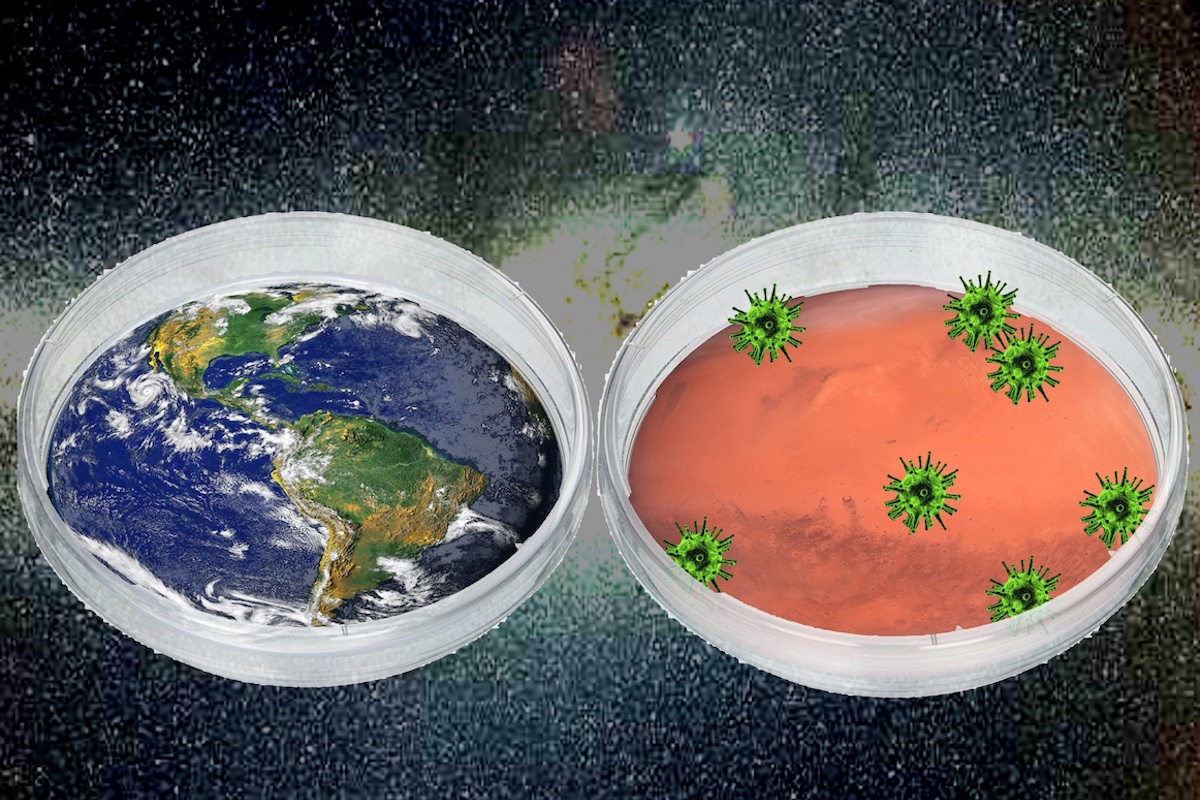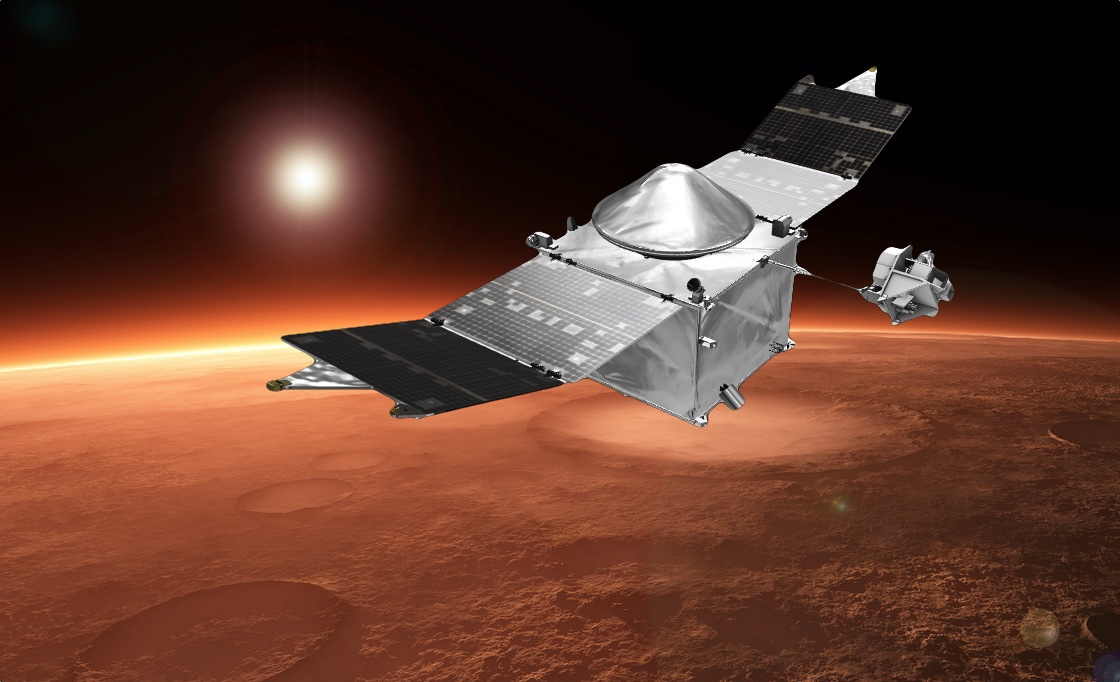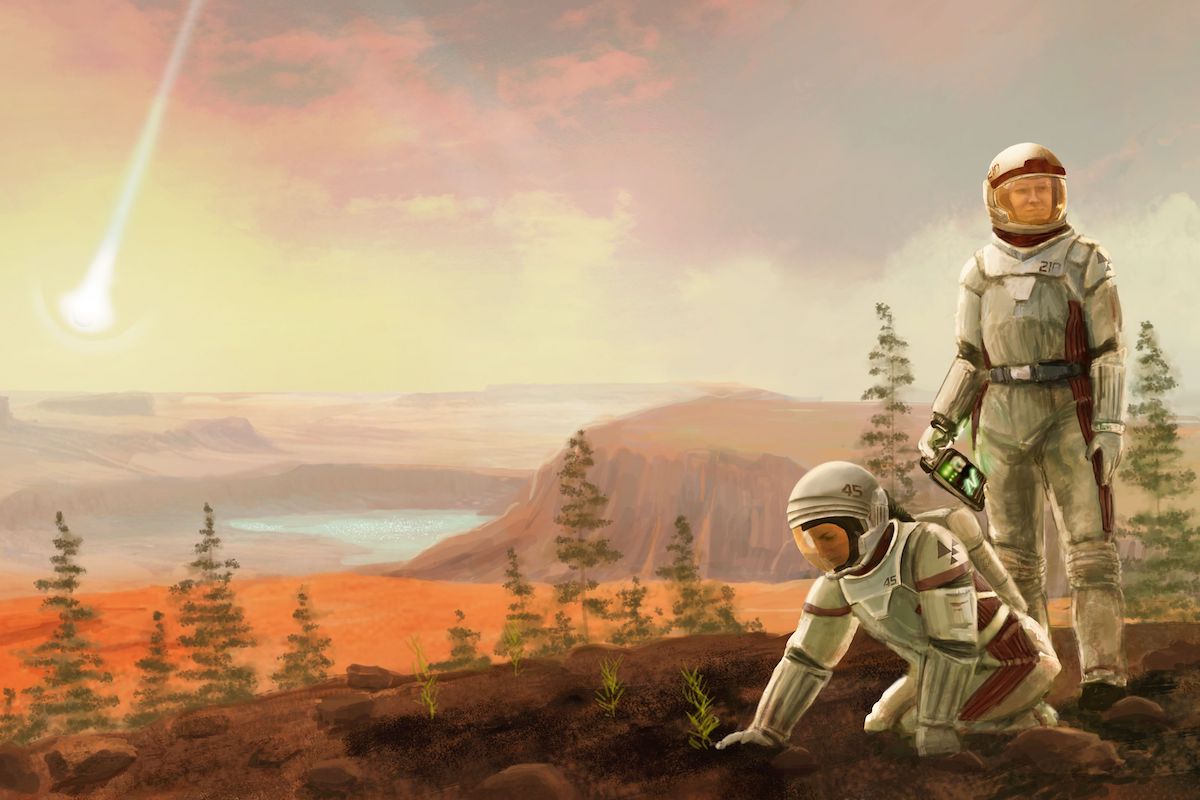Mars
One Small Martian Step for Man…One Giant Leap Toward the Annihilation of All Mankind
It is well known by now that, at some point, Mars had a lot of water on its surface, not just an isolated lake or two. There is strong evidence of now-dry rivers and deltas.

On October 21, U.S. National Aeronautics and Space Administration (NASA) Administrator Jim Bridenstine told the House Committee on Science, Space and Technology that he foresees NASA will land astronauts on the moon by 2035. “We need to learn how to live and work in another world,” he told lawmakers. “The moon is the best place to prove those capabilities and technologies.”
The article that follows comprises the fifth instalment in “Our Martian Moment,” a multi-part Quillette series in which our authors discuss what kind of society humans should build on Mars if and when we succeed in colonizing the red planet. Our editors invite submissions to this series, which may be directed to [email protected].
Early in his administration, U.S. President Donald Trump suggested that the United States should send an exploratory manned team to Mars. This year’s 40th anniversary of the moon landing has re-energized talk of space exploration. Recent items in Daily Caller and The New Atlantis offered enthusiastic visions of astronauts going off to the red planet, even as others offered naysaying.
Like many Americans, I am an enthusiastic supporter of NASA and the overall endeavor of space exploration and research. And it still pains me to think that my federal government killed the Space Shuttle program, the crown jewel of American technology, thereby denying our astronauts a means of being sent into space, and forcing us to rely instead on the Russians. (Later, when our government decided to condemn Vladimir Putin’s invasion of Crimea, a Russian official announced that the only way American astronauts would now be able to reach the international space station would be by trampoline.) And yet, having said that, let me also say that I strongly oppose the project of sending a manned mission to Mars, which would be useless at best and catastrophic at worst.
First, this likely would be a suicide mission. And when the astronauts died, as would almost certainly be the case, the resulting backlash would strengthen the case of those who insist that public money “would be better spent on Earth.” Going to Mars (minimum distance: 54.6-million km) is not like going to the moon (384,000 km). A crude comparison would involve someone in Wichita (a) making the two-and-half-hour drive to Oklahoma City, and then (b) taking a right turn on Interstate 40 and declaring that he was going on to Vladivostok. The distance to Mars is enormous. And, unlike the case of Apollo 13, this scenario offers no way for others to help out if something goes horribly wrong.
If and when astronauts get to Mars after such a prolonged period in space, they will be as weak as kittens and may not even be able to stand up on their own, much less explore. If one wants to know what they will see, just go to the Mohave desert at dawn and walk around wearing half a dozen ski jackets (which is about the closest anyone could come to simulating the effects of a spacesuit). Mars is a barren desert, an empty rock. We know that already thanks to unmanned missions. At this very moment, in fact, we have robotic wheels on the Martian regolith and sharp eyes in its orbit. NASA’s MAVEN spacecraft (“Mars Atmosphere and Volatile Evolution”) is still there, as is India’s Mangalyaan. And plans are afoot for other such unmanned projects. We already are learning about Mars, but without actually having to embark on the deadly project of getting there.

NASA’s Mars Maven orbiter.
We had to go to the moon because back in the 1960s we had absolutely no idea what it would be like. Such was our ignorance that there was even a theory that a lunar module, upon landing, would be swallowed up by lunar dust. We did not even know what Earth looked like from space. Yes, we had sent probes, but they were primitive—nothing like those we have today, some of which can even do chemical analysis on the spot and transmit the results back to us electronically.
“But what about life on Mars?” you ask. For centuries, people have asked this question—including 16th-century scientist Giordano Bruno, whose extraterrestrial theories got him burned at the stake. Francis Godwin, Voltaire, Cyrano de Bergerac and Daniel Defoe all wrote fictional works about life beyond earth. And of course, there was The War of the Worlds, H. G. Wells’ story of a massive Martian army invading us instead of vice versa.
Okay, so what about life on Mars? We already know the answer. There is none. Certainly no complex life forms. As for Martian bacteria, viruses or prions, they may exist. But God help us if even a small sample from that frigid red rock got the chance to multiply in the lush paradise that we call Earth. (Can you say “smorgasbord”?) It would be like putting a drop of sewer water in a Petri dish. But all this is likely beside the point, because scientists have discovered that there are perchlorates in the Martian soil that generally are lethal to bacteria and plants (as we know those life forms on earth). That’s bad news for anyone dreaming of “terraforming” Mars.
We know for a fact that bacteria formed on Earth 3.2-billion years ago (near the beginning of the solar system). This means that bacteria probably formed on Mars at around the same time. Recently, a liquid lake was found on Mars. This means that bacteria could still be there. So here is a possible scenario: Astronauts go to Mars and make it back alive. A cause for celebration, right? In fact, they might unwittingly bring back one or more alien species. And if so, these creatures likely would be harmful to us. Popular culture often teaches us to think of aliens as quasi-hippies that exist without harming others or their environment. But that’s not the way nature works.
If there is life out there, it must live off something.
If you have an optimistic belief that our governments would take the necessary steps to abort this potential pandemic, consider the fact that although the United States periodically ends up with invasive species that are detrimental, if not lethal, to local ecology, it does little to combat the invaders, nor the continued importing of such vermin. Although numerous exotic species (from pythons to kudzu to lionfish to water hyacinths) have come into North America and proliferated to the point of disrupting ecosystems, our government has not seen fit to put a ban on exotic species imported for sale in pet stores. To put it simply: When it comes to such matters, politicians are imbeciles. One should not rely on them. It would be a mistake.
Nor should you believe that we would quickly discover and wipe out any invasive pathogen. After all these years, there is no still cure for AIDS. Or smallpox. Or even measles. Or the common cold. Or pneumonia. Or chicken pox. Nor have we found a cure for the decimation of bees Or monarch butterflies. Or…need I go on?

Illustration from 1906 French edition of ‘War of the Worlds’
The point has often been made elsewhere that we might not even recognize alien life if we saw it—as it likely would take the form of bacteria or viruses that are biochemically different from their terrestrial counterparts. Such deadly pathogens could take months, or years, to manifest themselves in their hosts, by which time they would have spread globally. This would lead to the same ending as in The War of the Worlds, but with the roles of Martians and Earthlings reversed.
It is well known by now that, at some point, Mars had a lot of water on its surface, not just an isolated lake or two. There is strong evidence of now-dry rivers and deltas. So here is another scenario to give you nightmares. Perhaps the loss of Mars’ water was due to bacteria, or a virus, or even a microorganism as tough as a tardigrade, that somehow broke down the water at a molecular level and has since become dormant, much like microorganisms on earth go dormant during periods of scarcity or adversity, sometimes for millennia.
So a human steps on Mars and returns to Earth carrying the water-eating bug in the folds of a spacesuit. The virus escapes and water begins to disappear—slowly at first and then rapidly. What can be done? Nothing. One cannot apply a vaccine to the ocean.

If this scenario sounds implausible, then you are unacquainted with some of the bizarre microorganisms that already live on Earth. And consider the fact that billions of years ago, there was no oxygen on our planet—until the evolution of organisms that gave off oxygen as a byproduct of their metabolism. Oxygen was poisonous, or even corrosive, to the planet’s other inhabitants. They all either died, or became refugees in the planetary nooks and crannies where oxygen is unavailable.
And that is just one nightmare scenario out of thousands. Another would be a Martian microorganism that breaks apart chlorophyll for sustenance. Can we administer a vaccine to every blade of grass, tree and plankton?
Unless the answer is yes, we should be scrapping any plans to send humans to Mars. Far better to use that money to set up a permanent base on the moon, from which we could keep a sharp lookout for near-Earth asteroids. Instead of inviting human extinction on other planets, let’s try to keep humanity alive on the one we’ve already got.
Armando Simón is a retired forensic psychologist and the author of When Evolution Stops, The U, Samizdat 2020, and The Cult of Suicide and Other Sci Fi Stories.






